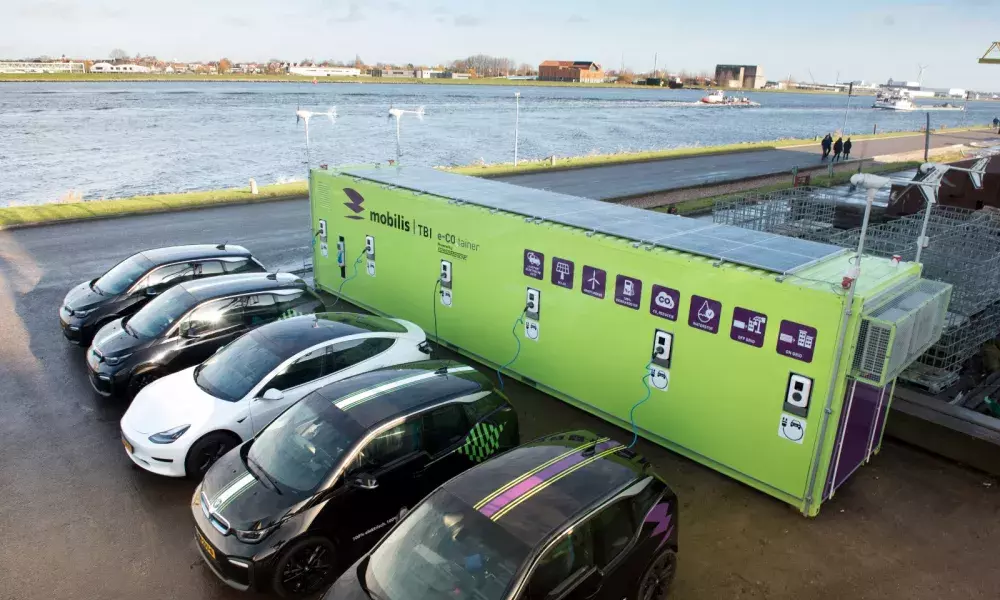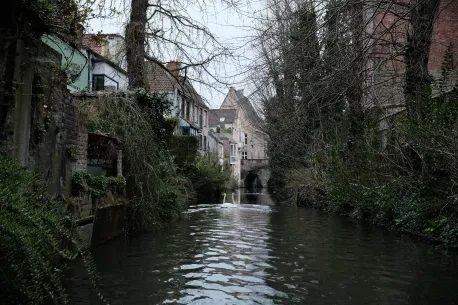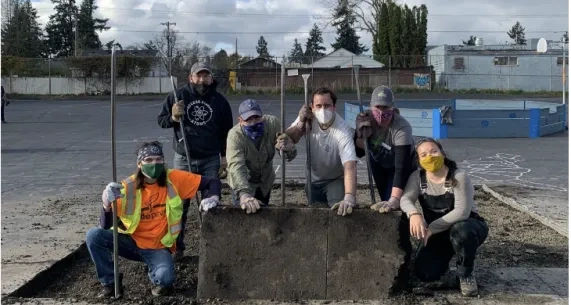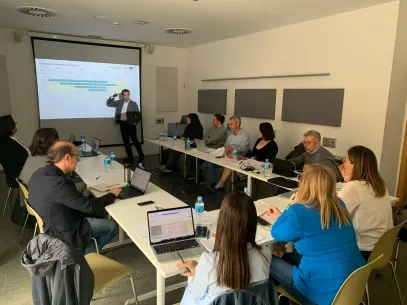
According to the United Nations Economic Commission for Europe, in 2019 construction represented a share of 5% of the Gross Domestic Product in the Netherlands. The share is even higher in surrounding countries such as the United Kingdom (6.6%), Spain (6.4%), Luxembourg (6.0%), France (5.8%), Germany (5.4%) or Belgium (5.4%).
Therefore, the construction branch brings an interesting opportunity for scaling up the AirQon solution. In fact, this approach was already considered in the early steps of the definition of the project and then included in the work plan. Nevertheless, the significant decrease in the number of events in 2020 due to the COVID-19 pandemic leaded to boost the application of AirQon on construction works.
"In addition to the events, we have considered other sectors in which to test and scale-up the use of the AirQon solution since we defined the project. The trend in the sector of events due to the pandemic has accelerated the leap to the construction branch."
SBPF is a partner of the consortium of AirQon with a deep background in providing powering solutions. Indeed, construction companies are one of their most common clients. SBPF usually provides municipalities with maps where public supply points are perfectly located, and at the same time they help construction sites to get access to them. That means that construction sites normally get connected to the electricity distribution network to feed their energy demands.

Map screenshot of the public supply points by SBPF/ NRG Accounting (available online: https://www.amsterdam.nl/wonen-leefomgeving/openbare-stroompunten/)
Nevertheless, sometimes the electricity network may not be accessible, or the technical requirements make it unfeasible, as in the case of long distances among supply points and construction sites. In addition to this, in some cases there might be a potential risk of impact in monuments, interference with other nearby urban infrastructures, such as water or gas, etc. This is the ideal scenario where off-grid solutions fit the requirements. Apart from conventional 100% diesel generators or hybrid generators, AirQon enables a green, sustainable, tailor-made solution for those clients.
Stop, plug and go!
In 2021 a new AirQon (dis)charging device has just been released. So far, the device was embarked in a Nissan eNV200 electric van, but this new version has been designed for outdoor applications, with the appropriate specifications for weather, dust, etc. Moreover, other car brands are expected to be part of these tests in the next months. All this will definitively enhance the versatility of the AirQon solution.

Photo of the new (dis)charging device, prepared for outdoor use
Several tests in construction works with the AirQon solution have been already completed and the basic functionalities have been successfully validated. For example, some small machinery, such as hammer drills, have been powered in Amsterdam. This lets a technician drive their own electric car wherever the need is and use it as the power source for the tools required to do the work. If we stop and think, nowadays, the most common situation will not only require a vehicle but also an additional power generator to do the same work, and normally both of them should be diesel powered, so therefore the inefficiency and the environmental impact are evident.

AirQon being used in a pilot test with construction machinery
Is this a practical solution? Of course! The maximum power delivered by the AirQon solution is 15 kW and the battery capacity of a standard electric car, such as Nissan eNV200, is 40 or 62 kWh. Therefore, it is enough for commuting and powering small machinery in a normal workday.
Moreover, there is an extraordinary potential in using AirQon for the on-field technical offices that can be found in any construction site. The energy consumption of these provisional buildings – lighting, small air conditioning systems, laptops, etc. – can be perfectly powered with the energy coming from the technicians’ electric cars. Consequently, these applications will severely reduce the inefficient use of diesel generators in construction for these small, punctual, intermittent demands.
In 2021 a new AirQon (dis)charging device has just been released. So far, the device was embarked in a Nissan eNV200 electric van, but this new version has been designed for outdoor applications, with the appropriate specifications for weather, dust, etc. Moreover, other car brands are expected to be part of these tests in the next months. All this will definitively enhance the versatility of the AirQon solution.

Photo of the new (dis)charging device, prepared for outdoor use
Several tests in construction works with the AirQon solution have been already completed and the basic functionalities have been successfully validated. For example, some small machinery, such as hammer drills, have been powered in Amsterdam. This lets a technician drive their own electric car wherever the need is and use it as the power source for the tools required to do the work. If we stop and think, nowadays, the most common situation will not only require a vehicle but also an additional power generator to do the same work, and normally both of them should be diesel powered, so therefore the inefficiency and the environmental impact are evident.

AirQon being used in a pilot test with construction machinery
Is this a practical solution? Of course! The maximum power delivered by the AirQon solution is 15 kW and the battery capacity of a standard electric car, such as Nissan eNV200, is 40 or 62 kWh. Therefore, it is enough for commuting and powering small machinery in a normal workday.
Moreover, there is an extraordinary potential in using AirQon for the on-field technical offices that can be found in any construction site. The energy consumption of these provisional buildings – lighting, small air conditioning systems, laptops, etc. – can be perfectly powered with the energy coming from the technicians’ electric cars. Consequently, these applications will severely reduce the inefficient use of diesel generators in construction for these small, punctual, intermittent demands.
Helping construction to become greener
Having close contact with construction contractors, knowing their needs in the daily work to provide them with powering solutions, led to design a more ambitious application for AirQon. There is a plan to develop a series of tests with Mobilis, a TBI company, which is the 5th biggest construction company in the Netherlands.
The objective here is to implement an all-in-one energy solution: e-CO2tainer. It is a large container that has been equipped with solar photovoltaic panels on the top and wind generators. In addition to this, there are batteries inside the container to store the energy not being consumed immediately, serving as a buffer to manage the whole system and to avoid wasting renewable energy. And, of course, it will be equipped as well with an AirQon device for the (dis)charge of electric vehicles, fully integrated in the all-in-one solution.

All-in-one energy solution e-CO2tainer by Mobilis, a TBI company, where AirQon will be integrated
The objective is to place this sustainable container in the base station of the contractor or in a principal construction site. The system as a whole, which is formed by generators and batteries, can provide power to on-site energy demands and to the AirQon solution in order to charge the vehicle plugged in. Therefore, the car, already charged with renewable energy, can be used to go to another construction site and to power there any small machinery as previously described.
Having close contact with construction contractors, knowing their needs in the daily work to provide them with powering solutions, led to design a more ambitious application for AirQon. There is a plan to develop a series of tests with Mobilis, a TBI company, which is the 5th biggest construction company in the Netherlands.
The objective here is to implement an all-in-one energy solution: e-CO2tainer. It is a large container that has been equipped with solar photovoltaic panels on the top and wind generators. In addition to this, there are batteries inside the container to store the energy not being consumed immediately, serving as a buffer to manage the whole system and to avoid wasting renewable energy. And, of course, it will be equipped as well with an AirQon device for the (dis)charge of electric vehicles, fully integrated in the all-in-one solution.

All-in-one energy solution e-CO2tainer by Mobilis, a TBI company, where AirQon will be integrated
The objective is to place this sustainable container in the base station of the contractor or in a principal construction site. The system as a whole, which is formed by generators and batteries, can provide power to on-site energy demands and to the AirQon solution in order to charge the vehicle plugged in. Therefore, the car, already charged with renewable energy, can be used to go to another construction site and to power there any small machinery as previously described.
“As a leading construction company, we are constantly looking for opportunities to optimize our construction sites to realize a high standard of sustainability. By working towards zero emission construction and integrating mobility, the partnership with AirQon looks very promising.”

Screenshot of the energy management app of the e-CO2tainer. On it, the discharge of an electric car is feeding an energy buffer which supplies the local demand, while the exceeding energy is being stored
Moreover, the presence of AirQon allows to use the battery of the car as an additional buffer capacity for the global all-in-one system. Consequently, being part of this energy solution lets AirQon be fully sustainable and bidirectional. These tests will be a great chance to show the capabilities of the AirQon solution, meaning an important step forward than simply powering machinery to work on field.
“This energy solution allows us to make the most of the possibilities of the electric vehicle as a flexible energy resource. AirQon can operate fully bi-directional, at the same time we maximize the use of renewable energies.”
But why should a construction company be interested on this? They get added value in using this solution. On the one hand, they let them use their electric car fleet for much more than just mobility purposes, and this helps them, at the same time, to become more efficient and decarbonized. On the other hand, they can improve the perception of their customers by developing a more sustainable business model. This means that sustainable construction can pay attention not only to the use of materials or the energy consumption of a building once finished, to cite some examples, but also to consider greener solutions to be used from the beginning, from the early phases of the construction works.
About this resource
The Urban Innovative Actions (UIA) is a European Union initiative that provided funding to urban areas across Europe to test new and unproven solutions to urban challenges. The initiative had a total ERDF budget of €372 million for 2014-2020.
Similar content




